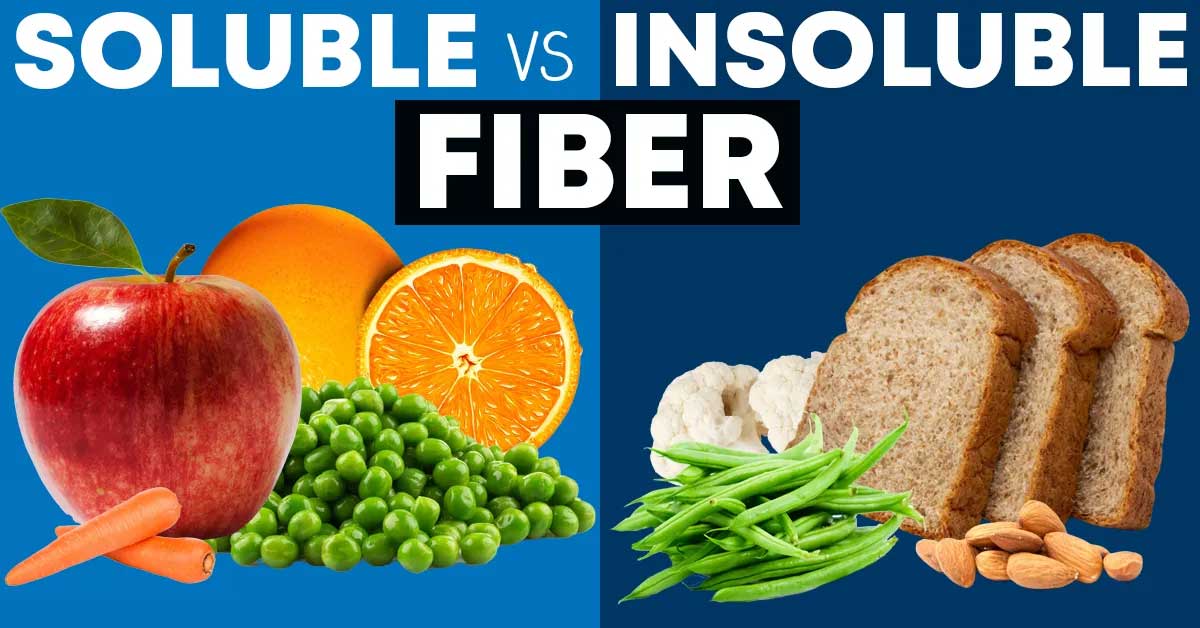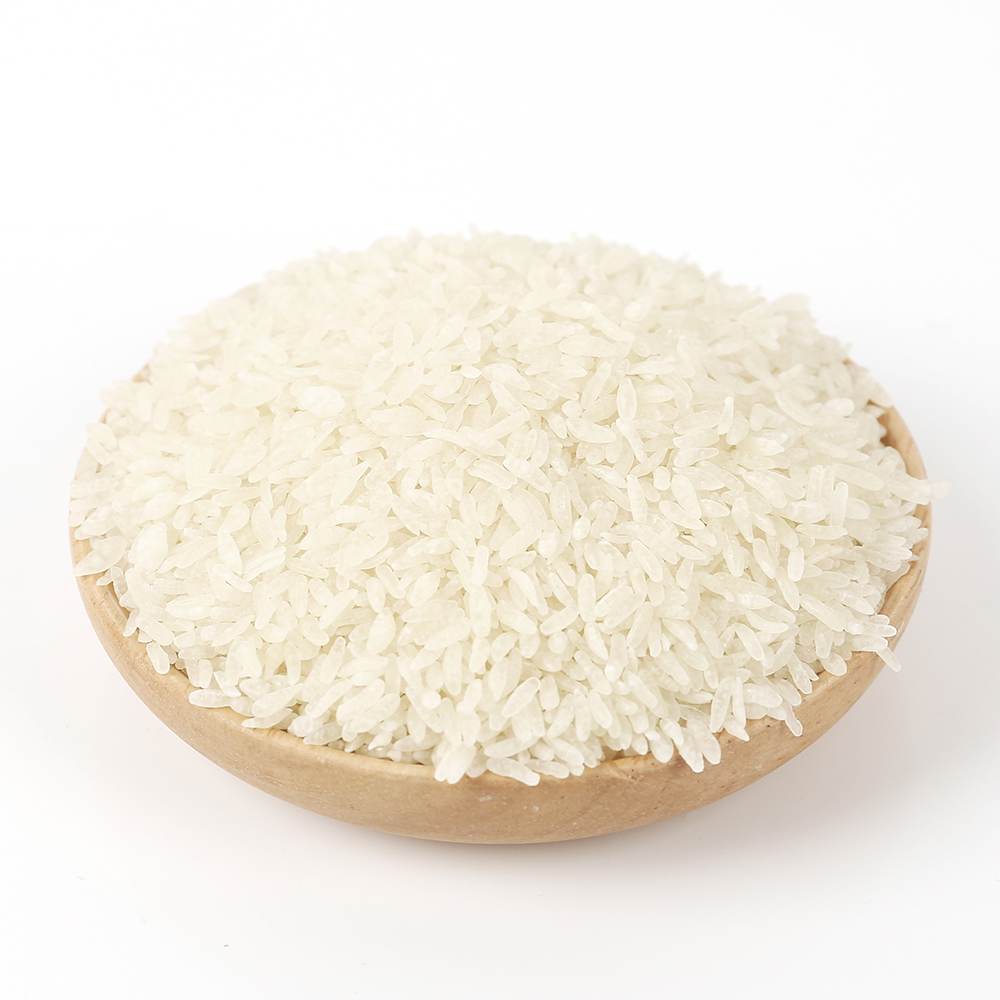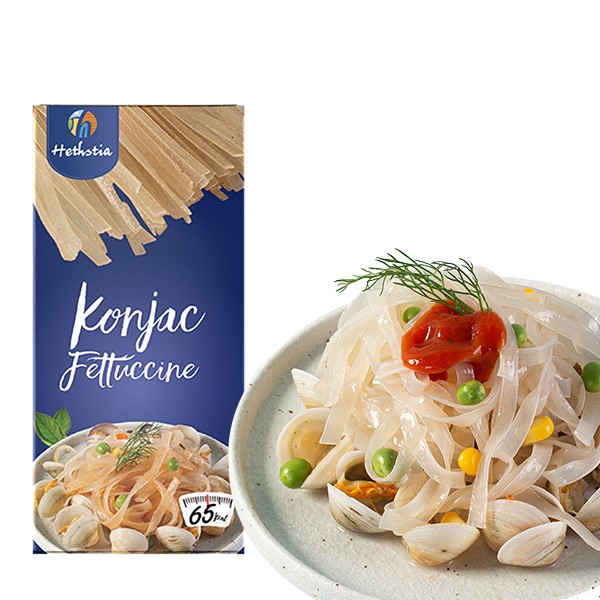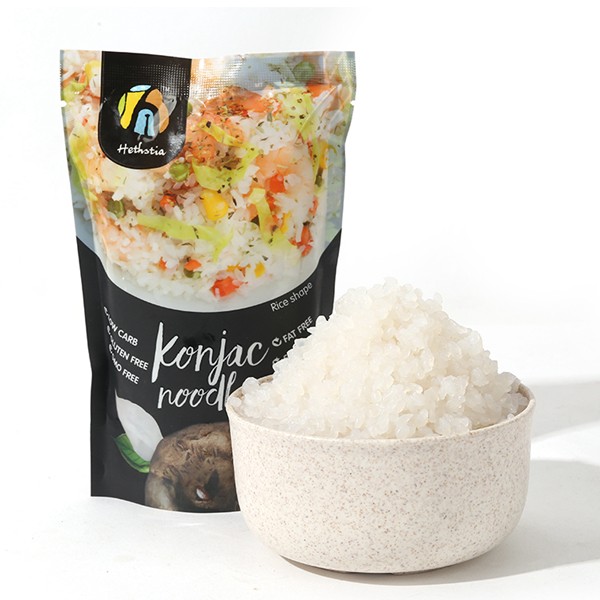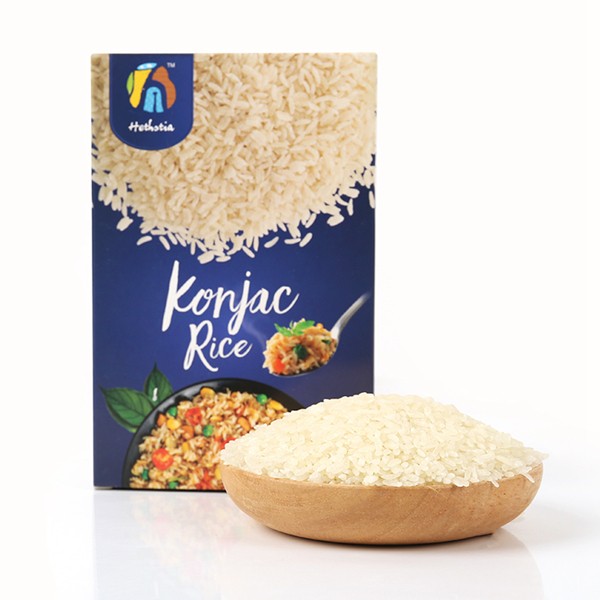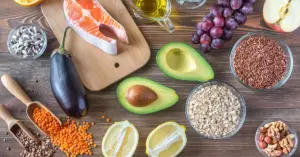Understanding Soluble Fiber
Soluble fiber is a type of water-soluble complex carbohydrate that forms a gel-like substance in the intestines. Unlike insoluble fiber, which undergoes little change as it passes through the digestive system, soluble fiber includes pectin, gums, and mucilages found in foods such as oats, apple, and lentils. These fibers are crucial for slowing down food absorption, thus helping to control blood sugar levels.
Soluble fiber and insoluble fiber are the two main types of dietary fiber, each with distinct characteristics and effects on the body.
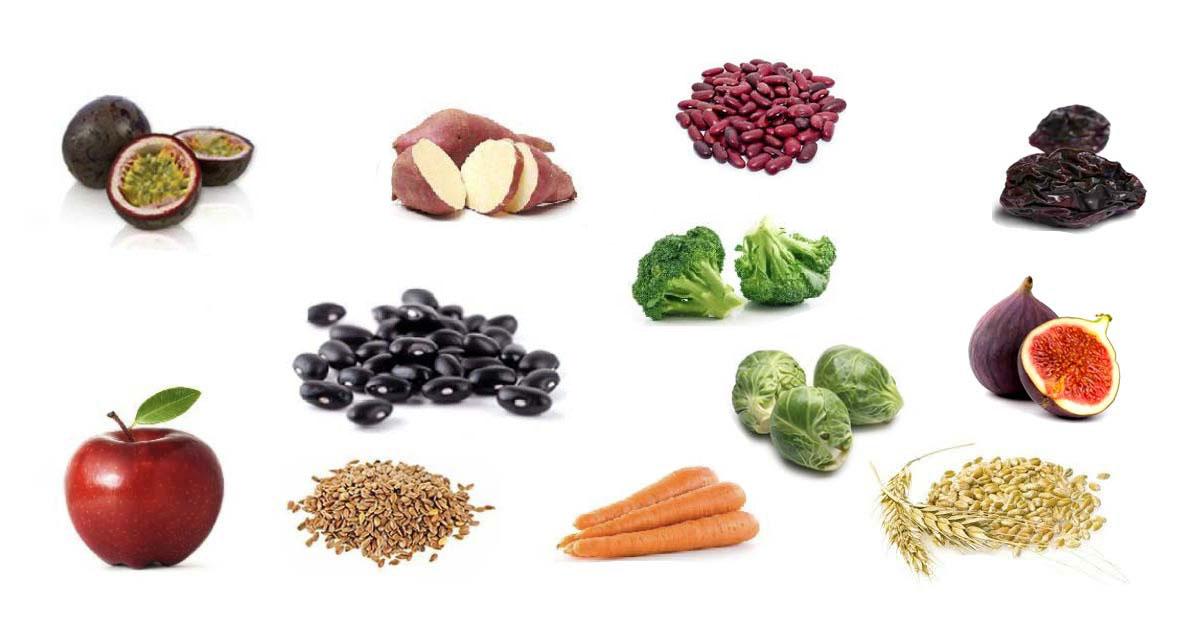
Soluble Fiber:
Soluble fiber dissolves in water, forming a gel-like substance in the digestive system.
Blood Sugar Regulation: Soluble fiber helps slow down the absorption of sugars, contributing to blood sugar regulation.
Cholesterol Reduction: It can bind with fatty acids and help lower levels of low-density lipoprotein (LDL) cholesterol in the blood.
Appetite Control: The gel formed by soluble fiber in the stomach can help you feel fuller for longer, aiding in weight management.
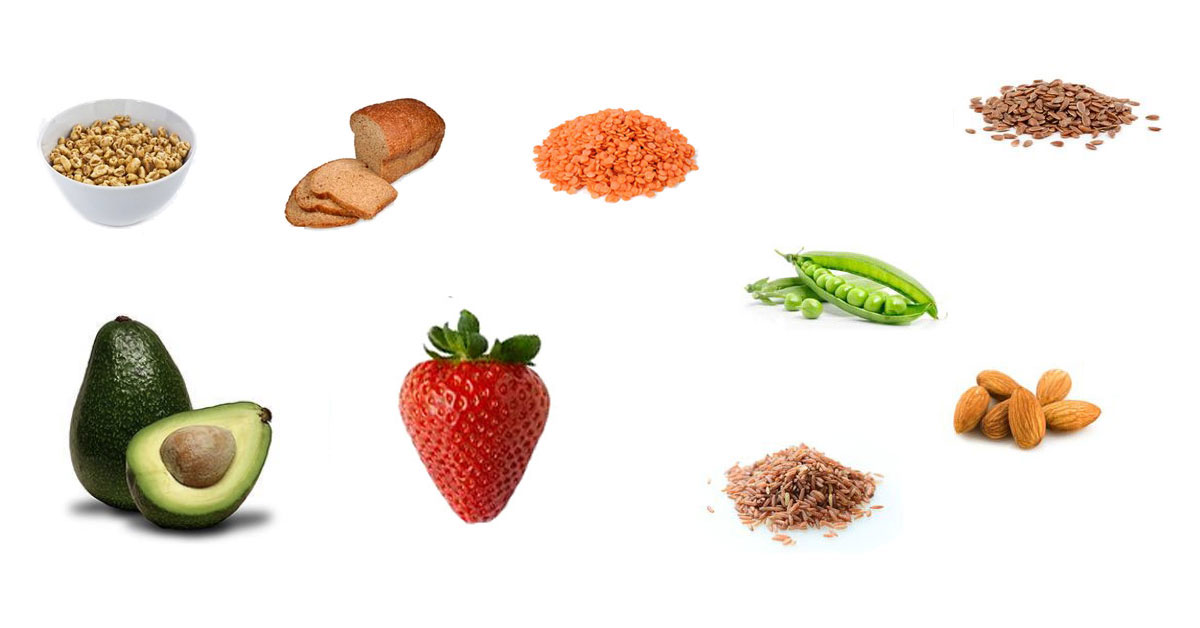
Insoluble Fiber:
Insoluble fiber does not dissolve in water. It primarily acts as a bulking agent, helping to form and move stool through the intestines, which is crucial for maintaining a healthy digestive system.
Promotes Regular Bowel Movements: It aids in increasing stool volume and promoting regular bowel movements, which is essential for preventing constipation.
Helps Prevent Digestive Disorders: Regular insoluble fiber intake can reduce the risk of various conditions such as diverticulitis and hemorrhoids.
Typical sources of insoluble fiber include whole grains, bran, nuts, vegetables, and potatoes.
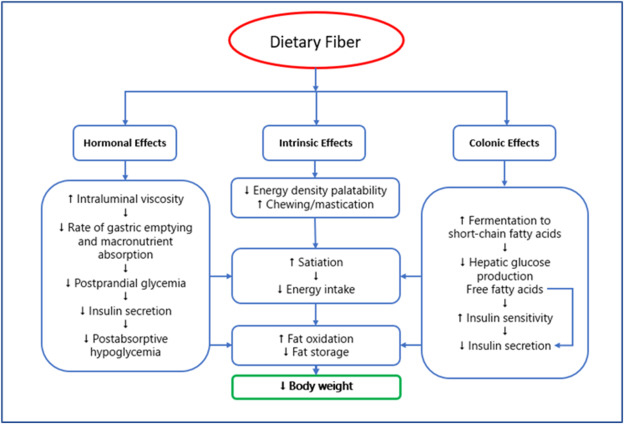
The Main Benefits of Soluble Fiber in Diabetes Management
1. Regulation of Blood Sugar Levels
Soluble fiber helps slow down the absorption of sugars, contributing to the regulation of postprandial blood sugar levels. The delayed absorption of glucose is crucial for maintaining stable blood sugar levels, which is a core concern for individuals with diabetes.
2. Reduction of Blood Cholesterol Levels
Soluble fiber can bind with cholesterol particles in the digestive system and excrete them before absorption, thereby helping to lower blood cholesterol levels. Consuming foods rich in viscous soluble fiber, such as legumes and flaxseeds, is particularly effective.
3. Lowering Cardiovascular Risk
Individuals with diabetes have a higher risk of cardiovascular diseases. By reducing blood cholesterol and improving blood sugar levels, soluble fiber significantly contributes to lowering this risk.
4. Enhanced Gut Health
Soluble fiber ferments in the large intestine, producing short-chain fatty acids that provide nourishment to intestinal bacteria. This process not only improves gut health but also contributes to better immune responses.
5. Appetite Control
By forming a viscous gel that slows down digestion, soluble fiber also aids in appetite control, which is a valuable benefit for weight management. Feeling full helps reduce overall calorie intake, benefiting both diabetes management and weight control.
How Does Soluble Fiber Work in Your Body?
Additionally, this gel-like substance interacts with bile acids made from cholesterol in the intestines, removing bile acids and prompting the body to extract cholesterol from the blood to replace them. This process reduces overall cholesterol levels, particularly harmful low-density lipoprotein (LDL) cholesterol, thereby protecting heart health.
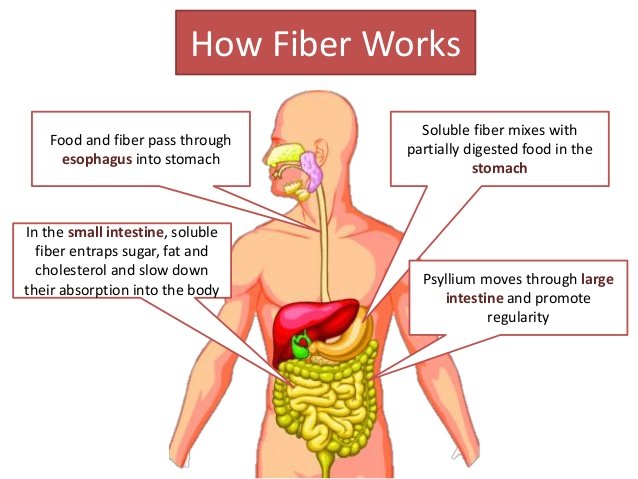
The Benefits of Soluble Fiber for Weight Control
Obesity is a common challenge faced by individuals with type 2 diabetes, making effective weight control crucial. Soluble fiber aids in this process by increasing satiety and reducing appetite. This fiber absorbs water and expands in the stomach, leading to a quicker feeling of fullness during meals, thus helping to decrease overall calorie intake.
Soluble Fiber and Colon Health
Colon health is vital for overall well-being, particularly for individuals with diabetes who may experience compromised digestive systems. Soluble fiber helps soften the stool, reducing the common occurrence of constipation in individuals with diabetes. Additionally, when soluble fiber ferments in the colon, it nurtures beneficial bacteria that play a critical role in maintaining gut and metabolic health.
Focus on Konjac Glucomannan (KGM)
Konjac glucomannan (KGM) is a high-viscosity soluble fiber found in the konjac plant, and it serves as a paradigm of soluble fiber in the treatment of diabetes. KGM can absorb a significant amount of water, forming a large quantity of gel, which further slows down the absorption of glucose. Clinical studies have shown that KGM can help alleviate postprandial blood sugar spikes, enhance satiety, and contribute to weight loss.
Incorporate Soluble Fiber into Your Diet
Adding soluble fiber to your diet is easier than you might imagine. Here are some simple strategies:
Start your day with a bowl of konjac rice.
Include legumes such as lentils or chickpeas in your diet a few times a week.
Opt for oats and oatmeal, which are rich in beta-glucan.
Enjoy fiber-rich fruits like berries, oranges, or apples. Pectin, a soluble fiber, aids in blood sugar control and digestion.
Add vegetables like Brussels sprouts, carrots, and broccoli to your meals.
Nuts and seeds, especially almonds, flaxseeds, and chia seeds, make excellent additions to yogurt, smoothies, and salads.
Konjac rice, also known as shirataki rice, is an excellent food choice for individuals with diabetes due to its unique characteristics and health benefits.
Derived from the root of the konjac plant, this rice is rich in glucomannan, a soluble fiber that offers various positive effects on diabetes management.
The high fiber content in konjac rice helps increase post-meal satiety and prevents overeating.
Konjac rice is a great alternative to traditional rice, aiding in blood sugar control, supporting weight management, and promoting overall gastrointestinal health.
Effect of konjac rice on subjects with different serum cholesterol concentrations (M±SD)*
| Concentration (mg/dl) | Number of people | Decliner (mg/dl) |
| 200–230 | 54 | 8.3±18.2 |
| >230 | 12 | 42.4±23.4 |
*Comparison of patients with different serum concentrations, P<0.01.
Effect of konjac rice on subjects with different serum triglyceride concentrations (M±SD)*
| Concentration (mg/dl) | Number of people | Decline value (mg/dl) |
| 130–150 | twenty three | -1.1±23.1 |
| >150 | 43 | 83.8±133.5 |
Studies have shown that soluble fiber has a significant role in improving glucose metabolism, while insoluble fiber has no significant effect.
West China Medical University study of konjac rice on diabetic patients with blood glucose, the results show that konjac rice has a hypoglycemic effect, the hypoglycemic effect on the heavier than the lighter, and to reduce postprandial blood glucose and to reduce fasting blood glucose is more effective.
Changes in blood glucose levels after consumption of konjac rice
| Biochemical Indicators | example number | Before test | Under test | After the test | ||
| forward | middle | back | ||||
| Fasting blood glucose (mg%) | 72 | 71 | 61 | 159.53±36.12 | 140.48±28.41 | 139.52±35.82 |
| Postprandial blood sugar (mg%) | 72 | 71 | 61 | 275.72±80.32 | 236.90±59.74 | 227.67±59.10 |
| Glycated hemoglobin (nmol fructose/10mgHb) | 71 | 40 | 27 | 91.68±21.76 | 82.85±19.82 | 77.93±17.83 |
Comparison of blood glucose drop values (mg%) among the three groups at the end of the trial
| index | Light (FBG-0<150mg%) | Medium (150≤FBG-0<200mg%) | Heavy (FBG-0≥200mg%) | ||||||
| Number of cases | falling value | Decline rate (%) | Number of cases | falling value | Decline rate (%) | Number of cases | falling value | Decline rate (%) | |
| FBG | 24 | 4.83 | 3.73 | 28 | 24.07 | 14.51 | 9 | 51.8 | 22.82 |
| FBG | 24 | 21.42 | 9.71 | 28 | 68.67 | 21.11 | 9 | 84.6 | 24.15 |
Conclusion
Soluble fiber plays a variety of roles in enhancing the health of people with diabetes by stabilizing blood glucose levels, lowering cholesterol, helping with weight control and supporting colon health. Eating foods rich in soluble fiber is a practical and effective strategy for improving long-term diabetes outcomes.
Remember, managing diabetes requires a holistic approach that includes proper diet, regular exercise and continuous monitoring of blood glucose levels.
FAQ
Is Konjac soluble or insoluble fiber?
Konjac is a soluble fiber. After heating konjac with alkali, glucomannan sheds the acetyl group on the molecular chain, forming an irreversible gel, and the soluble fiber becomes insoluble fiber.
Is rice soluble or insoluble fiber?
Rice consists mainly of carbohydrates and contains a small amount of dietary fiber. The type of fiber in rice varies depending on the processing and preparation methods.
In its natural state, rice contains both soluble and insoluble fiber. The outer husk, bran layer, and germ of the rice grain contain most of the insoluble fiber, while the endosperm (the starchy part of the grain) contains mostly soluble fiber.
However, when rice is processed and polished to remove the outer layers, most of the fiber content is lost along with the bran and germ. As a result, white rice has a significantly lower fiber content compared to whole grain or brown rice.
Is chia soluble or insoluble fiber?
Chia seeds contain both soluble and insoluble fiber, with about 80% of the carbohydrate content being fiber. This high fiber content (both soluble and insoluble fiber) helps improve digestion and heart health.
Is acacia fiber soluble or insoluble?
Acacia fiber, also known as gum arabic or acacia gum, is a soluble fiber. This gel can help slow down the digestive process, promote a feeling of fullness, and regulate blood sugar levels.
Is avocado soluble or insoluble fiber?
Avocados contain both soluble and insoluble fiber.
The soluble fiber in avocados can help regulate blood sugar levels and lower cholesterol levels.
On the other hand, avocados also contain insoluble fiber, which can increase stool bulk and promote regular bowel movements.
The exact amount of soluble and insoluble fiber in avocados may vary depending on the variety and ripeness of the fruit.
Is popcorn soluble or insoluble fiber?
Popcorn is a whole grain snack that contains both soluble and insoluble fiber.
The husk or shell of the popcorn kernel consists primarily of insoluble fiber. However, popcorn also contains a small amount of soluble fiber.
The fiber content of popcorn may vary depending on factors such as the type of popcorn, portion size, and any added ingredients. Plain air-popped popcorn without added butter or excessive salt tends to be a healthier choice because it retains more of its natural fiber content.
Is broccoli soluble or insoluble fiber?
Broccoli is a vegetable that contains both soluble and insoluble fiber.
The soluble fiber in broccoli absorbs water and forms a gel-like substance in the digestive tract. This gel can help regulate blood sugar levels, lower cholesterol levels, and contribute to a feeling of fullness.
In addition to soluble fiber, broccoli is also a good source of insoluble fiber.
Is flaxseed soluble or insoluble fiber?
Flaxseed contains both soluble and insoluble fiber.
It is important to note that when whole flaxseeds are consumed, the shell is not easily digestible and the fiber content remains the same. To make the most of the fiber content of flaxseeds, it is recommended that they be ground or milled before consumption. Ground flaxseeds are easier to digest and allow for better absorption of nutrients, including fiber.
Is psyllium insoluble or soluble fiber?
Psyllium seed consists mainly of soluble fiber.
Psyllium husk is derived from the seeds of the ovate psyllium plant and is commonly used as an ingredient in dietary supplements and fiber-rich products. It is known for its high soluble fiber content.
Due to its high fiber content, psyllium husk is commonly used as a natural laxative and dietary fiber supplement.
When should you take psyllium husk?
psyllium husk seed consists mainly of soluble fiber.
Psyllium husk is derived from the seeds of the ovate psyllium plant and is commonly used as an ingredient in dietary supplements and fiber-rich products. It is known for its high soluble fiber content.
Due to its high fiber content, psyllium husk is commonly used as a natural laxative and dietary fiber supplement.
Is brown rice soluble or insoluble fiber?
Brown rice contains both soluble and insoluble fiber.
The bran layer of brown rice contains most of the insoluble fiber and the endosperm of brown rice contains soluble fiber.
Brown rice retains its fiber content, both soluble and insoluble, compared to white rice that has been processed and had the bran and endosperm removed.
Are apples soluble or insoluble fiber?
Most apples contain soluble fiber and small amounts of insoluble fiber.
The exact amount of soluble and insoluble fiber in apples may vary depending on the variety and ripeness of the fruit.
Are bananas soluble or insoluble fiber?
The main type of fiber found in bananas is soluble fiber.
Although bananas are high in soluble fiber, they also contain some amount of insoluble fiber.
Are carrots soluble or insoluble fiber?
Carrots are primarily a source of insoluble fiber.
Carrots contain a type of insoluble fiber called cellulose, which is a major component of plant cell walls.
Is oat fiber soluble or insoluble?
The main type of fiber in oats is soluble fiber.
The soluble fiber in oats consists mainly of a type called beta-glucan.
In addition to soluble fiber, oats also contain small amounts of insoluble fiber.
The exact ratio of soluble to insoluble fiber in oats may vary depending on the type of oats and how they are processed. In general, oats are considered a good source of soluble fiber.
Is quinoa soluble or insoluble fiber?
The main type of fiber found in quinoa is insoluble fiber.
Quinoa also contains a small amount of soluble fiber.
The exact ratio of soluble to insoluble fiber in quinoa may vary, depending on factors such as the variety of quinoa and its preparation method.
Are lentils soluble or insoluble fiber?
The main type of fiber in lentils is soluble fiber.
Is celery soluble or insoluble fiber?
Celery consists mainly of insoluble fiber, but also contains a small amount of soluble fiber.
Celery is known for its high fiber content, especially insoluble fiber, which contributes to its fibrous and crunchy texture.
Is citrucel soluble or insoluble fiber?
Citrucel contains methylcellulose as its active ingredient. Methylcellulose is a fiber that is classified as a soluble fiber.
How much soluble and insoluble fiber per day?
There is no specific requirement for the ratio of soluble to insoluble fiber in the daily intake. Intake varies according to factors such as age, gender, and specific dietary needs. A general guideline for adults is to consume about 25-38 grams of total fiber per day, including both soluble and insoluble fiber.

